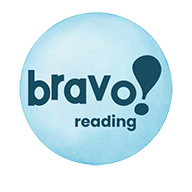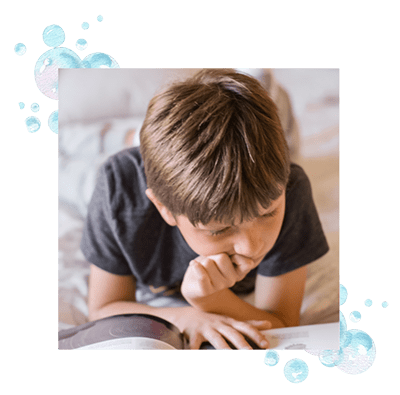The Ultimate Dyslexia Symptoms Checklist – How It Can Help Your Child

Have you ever wished for a real-world dyslexia symptoms list? One that makes sense to you, your child, and your family? Maybe your child has been diagnosed with dyslexia, or perhaps you’re in the process of trying to figure the whole thing out. Don’t fear! Bravo! Reading is happy to share our Ultimate Dyslexia Symptoms List to help you in your journey.

Kids with dyslexia are delightful to be around. They are usually fun, perceptive, creative, and they’re often the life of the party. However, if you have a child with dyslexia or reveals dyslexia symptoms, you might be pulling out your hair. Your child looks so normal…acts so normal. But there’s a disconnect…
Even so, your child might be gifted in certain areas such as socially or athletically. But when it comes time to read, a monster rears its head. Or maybe your child is a retreat-er and skedaddles away.
How To Keep Your Child On Track

There are many dyslexia symptoms lists floating around the internet, but there are also numerous misconceptions about this frustrating neurological condition. For example, kids with dyslexia are smart; that’s one of the biggest indicators of dyslexia.
These children are often verbally astute and can tell you facts and figures that blow your mind. But if you ask a child with dyslexia to read a short reading passage and tell you what was read, eyes glaze over in short order.
However, even with this bit of knowledge, checking to see if your child has dyslexia symptoms is the first step to understanding this frustrating condition. Looking at a dyslexia symptoms list from someone who’s been in the trenches for decades is a start to taking the steps of not only understanding but helping a child with dyslexia.
The Ultimate Dyslexia Symptoms Checklist
Following is a list of real-world dyslexia symptoms as put together by Bravo! Reading and Dyslexia Specialist, Lisa Harp.
Does your child:
- push hard on a pencil when writing?
- make circles upside down or not starting at the top in a counterclockwise movement?
- tilt the head when doing schoolwork?
- slump or reveal poor core strength?
- have a high vocabulary but can’t translate it into reading and writing?
- seem to be in a “fog” a lot of the time – spacing out or daydreaming?
- write and read letters or words backward (reversals) after one full year of instruction?
- have an unorganized desk, backpack, or room?
- have a difficult time tying shoes or learning to tie shoes?
- exhibit a difficult time understanding an analog clock or “time” concepts?
- have an excellent long-term memory but can’t remember simple instructions or details?
- show a huge discrepancy between ability and achievement?
- have a family history of dyslexia or other learning problems?
- learn to read by memorizing words instead of sounding them out?
- spell words phonetically or inconsistently?
- have a difficult time with two to three-step directions?
- have a difficult time reading small sight words such as “for” or “saw”?
- skip lines or paragraphs when reading?
- have a difficult time with directions – left, right, up, down?
- guess at words while reading instead of sounding them out?
- hate school or doesn’t feel smart?
- process information excessively fast or slow?
- act out or withdraw in response to difficult learning, reading, or school pressure?
- have messy handwriting and/or artwork?
- grip pencil tightly when writing?
- have a difficult time copying from the board?
- have a difficult time copying from a book to paper?
- stick out tongue while doing schoolwork or concentrating?
How To Check To For Dyslexia Symptoms:
If you saw your child in the above Ultimate Dyslexia Symptoms List, then chances are either you or your child are highly frustrated. Your might be engaging in homework battles, have confidence issues, poor grades, and overall school disappointment.

What makes dyslexia and dyslexia symptoms so darn hard is that kids with dyslexia start out strong. It’s often not until third or fourth grade when it becomes too difficult to memorize all words being read and when the print of text becomes small that many kids with dyslexia fall apart.
Parents encourage kids with dyslexia to work harder, scratching their heads in defeat, wondering what happened to their superstar.
Dyslexia is what happened; pure and simple.
Searching For A Diagnosis Can Be Confusing!

Getting a diagnosis is hard…or expensive. So most kids remain un-diagnosed. The mystery condition rages on while the child fails to receive help. (Try the Bravo! Dysexia Test, a free resource to help you find indications of dyslexia in your child or student.)
Dyslexia is a neurological language processing disorder and does not go away on its own. Each year that goes by without proper interventions, a child with dyslexia gets caught in a failure chain. Is it any wonder that 48% of the American prison population is dyslexic?
Sadly, most schools keep adding traditional reading programs and techniques to dyslexic children’s learning menu instead of making sure they have innovative, targeted materials aimed at their specific learning and reading needs from the start. It’s as if dyslexia symptoms don’t exist, as if they are ghosts in the closet.
And…no wonder.
Schools cater to the masses, and even though twenty percent of the population has dyslexia, the bulk of kids who read without many hassles get the attention. Here’s the dirty truth…something schools are failing to take into consideration at a miserable rate. Kids with dyslexia require specific interventions to help them read.
From Two Years Behind To Grade Level Reading!
Most public schools will wait until a student is two years behind before intervening. By the time a child with dyslexia is two grade levels behind, it’s difficult to make progress unless the right materials and activities are used. For instance, traditional reading programs that are based on phonics will only serve to upset a child with dyslexia or revealing dyslexia symptoms. Eyes will glaze over; that’s a guarantee!
Kids with dyslexia and dyslexia symptoms cannot learn to read through phonics, memorizing sight words, and scouring grade level reading passages to answer comprehension questions. They simply don’t learn in a way that allows them to do this! Phonics sheets are aimed at left-brain dominant children, and most dyslexic learners are right-brain dominant.

If changes are made to a dyslexic child’s curriculum, then huge strides can be made. But offering them an undigestible plate of more phonics, more reading and fluency activities without movement, color, pictures, or a multisensory approach, leaves them lacking…to say the least.
The first thing kids with dyslexia need is movement – and not just any movement will do. If you want to see your child make huge reading and decoding progress, make sure a program is used that focuses on large motor movements. (Check out the Bravo! Punch Pack, a free resource to help your child start moving to read!)
How Large Motor Movements Make For A Happy Reader!
Kids with dyslexia and dysexia symptoms need large motor movements. These motor movements entail using the hand, arm, and shoulder. Moving a tile, writing letters in sand, or molding words out of clay help a child with dyslexia, but they don’t offer enough punch to get the results needed.
Research tells us that children with dyslexia and those revealing dyslexia symptoms do best with an Orton-Gillingham, multisensory approach to reading. This means that they learn through doing, hearing, and seeing.
The key word here is doing.

And not just any “doing” works. Kids with dyslexia and dyslexia symptoms respond best to large motor movements. This means their shoulders, arms, and hands need to be engaged. When large motor movements are used to teach kids with dyslexia to read and spell, miracles happen!
Kids with dyslexia are also compromised in visual and auditory processing abilities. This means that…once again…they learn best by doing, not by seeing or hearing.
If your child has dyslexia, or even if you suspect it’s lurking inside your child or student, there are solutions available to help. But before you get into it any further, you need to accept that traditional reading methodologies won’t work for your child, and discover how fantastic it feels when your child or student is reading like a champ!


